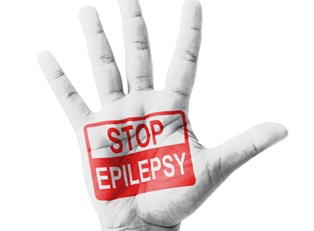Being diagnosed with a medical condition can feel overwhelming, not to mention all the symptoms that go with it. Often a diagnosis involves learning a whole new vocabulary. Epilepsy, a neurological disorder involving recurring seizures in which the cause is not provoked by some known reason, is no different. Here are 10 important terms to help you understand the types of epilepsy and epilepsy causes so you can better communicate with your physician, family, friends, and co-workers.
- Seizure
Simply put, a seizure is a disruption in the brain’s electrical impulses. Seizures vary depending on the cause and where in the brain they originate. Typically, seizures last anywhere from seconds to two minutes; those lasting more than five minutes are considered medical emergencies and are potentially life-threatening.
- Neurologist
Epilepsy, the fourth most common neurological disorder, according to the Epilepsy Foundation, will likely require the care of a neurologist, a physician who specializes in conditions related to the brain. When medication fails to control seizures, patients often seek out a neurologist who specializes in epilepsy, which is known as an epileptologist.
- EEG
An electroencepholography (EEG) is a test used to measure your brain’s electrical activity. EEGs are low-risk, painless tests. An EEG machine records data via small electrodes applied to the scalp, converting the impulses to waves which your doctor can read. EEGs allow practitioners to detect irregular patterns of activity and the areas of brain involvement.
- AED
The first line treatment for epilepsy is seizure-prevention medication or anti-epileptic drugs (AEDs). Medications will vary based on the type of epilepsy and kind of seizures you have. According to the Cleveland Clinic, medications can control seizures in about 70% of patients.
- Partial Epilepsy
Partial epilepsy, the most common type of epilepsy, accounts for nearly 60% of all adult cases, according to the National Institutes of Health (NIH). Partial means only a certain area of the brain is involved, usually the temporal lobe. In many cases, these seizures occur without a loss of consciousness.
Temporal lobe epilepsy (TLE) is the most common type of partial epilepsy and usually occurs at the ends of childhood or adolescence. TLE can result from a brain injury and is also associated with febrile seizures that persisted longer than 15 minutes. These seizures, which are sometimes barely noticeable, affect the senses or emotions in some way and may include a déjà vu feeling. Medications alone will not always control TLE, and it is sometimes labeled as "drug resistant." Many patients with temporary lobe epilepsy may be candidates for surgery or vagal nerve stimulation (VNS) therapy. Depression can be an issue when treatment fails.
- Generalized Epilepsy
When seizure activity includes whole-brain involvement it is generalized. Characterized by a loss of consciousness and sudden jerking movements, generalized epilepsy is what most people think of when they imagine a seizure.
- Simple
If your seizure has the word simple in its name, it means that your kind of seizures usually do not cause you to lose consciousness. Many times these seizures are hardly noticeable and you may be fully able to function normally during one.
- Complex
Complex in the name means a seizure results in a loss of consciousness. A blank stare or a "daydreamy" look are characteristic of complex seizures.
- Tonic
Tonic seizures will typically cause muscle stiffening behaviors. Often these seizures occur during sleep and may last less than 20 seconds.
- Clonic
Clonic means “repeated jerking.” These seizures may appear to be painful and injury may occur from hitting objects nearby, so creating a safe space around the person is a good idea. Restraint will not stop a clonic seizure and may result in more harm. Purely clonic seizures are rare; the most common seizure involving clonic behaviors is the clonic-tonic (or grand mal) seizure.
Clonic-tonic seizures involve groaning or crying, loss of consciousness, and jerking and stiffening of muscles. Loss of bladder or bowel control and tongue biting may also occur. According to the Epilepsy Foundation, these seizures generally last 1-3 minutes, and first aid may be necessary if injuries result.



